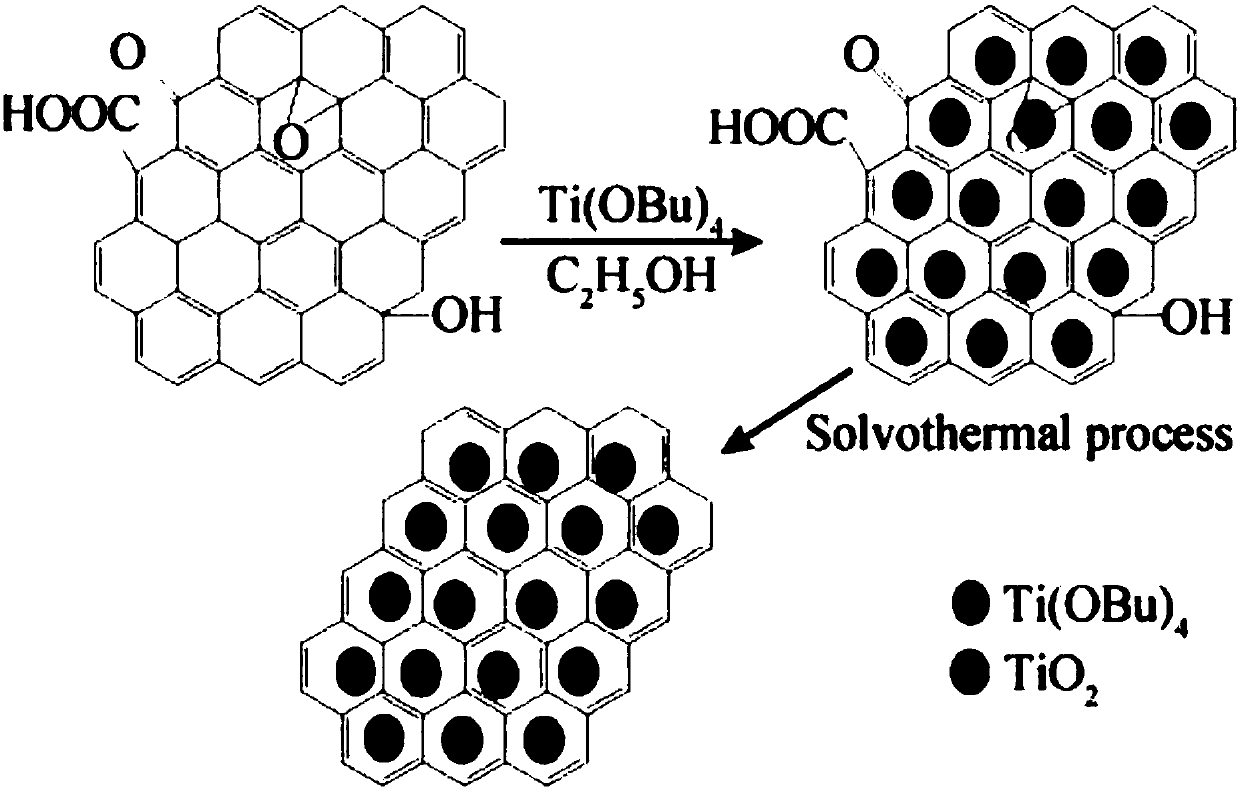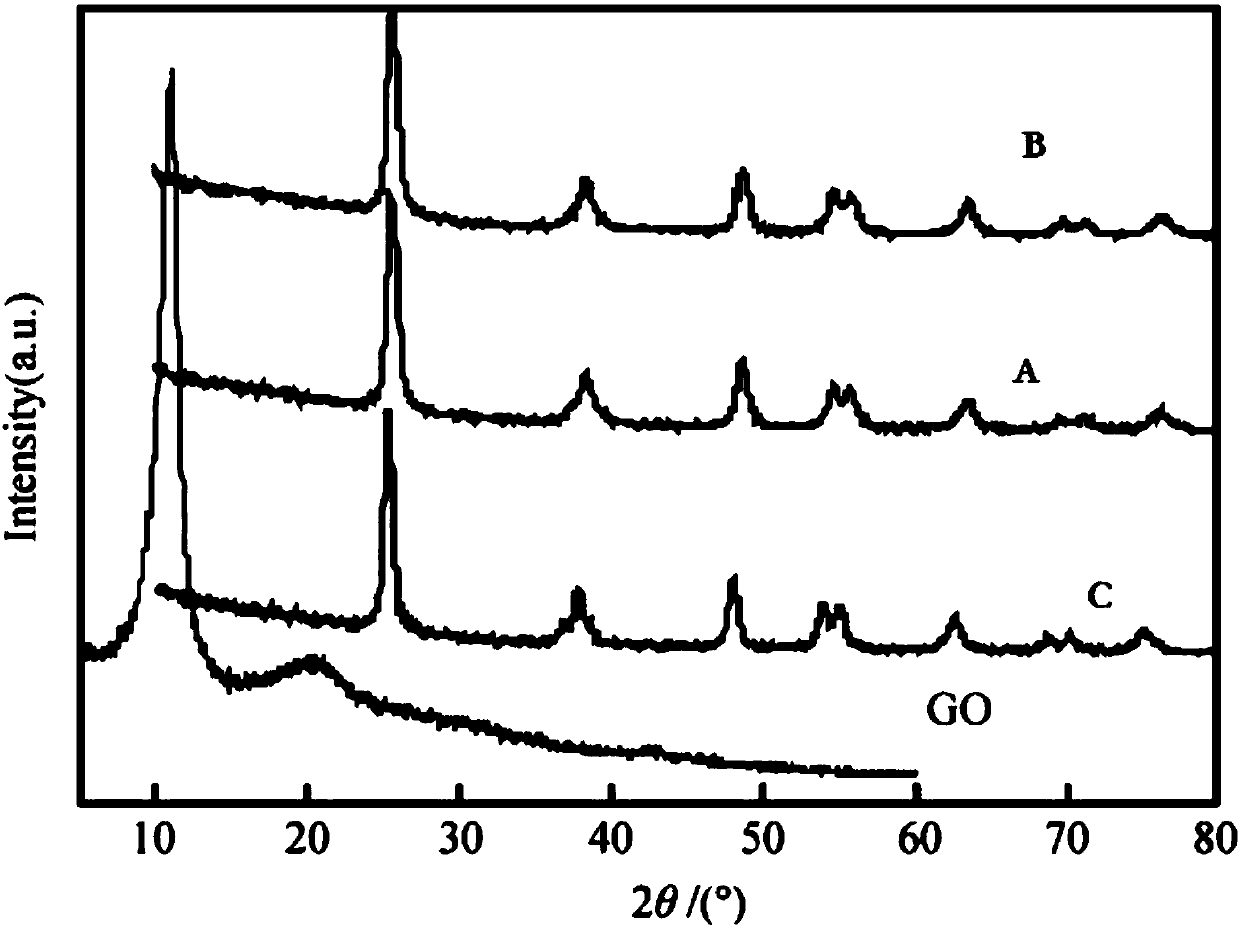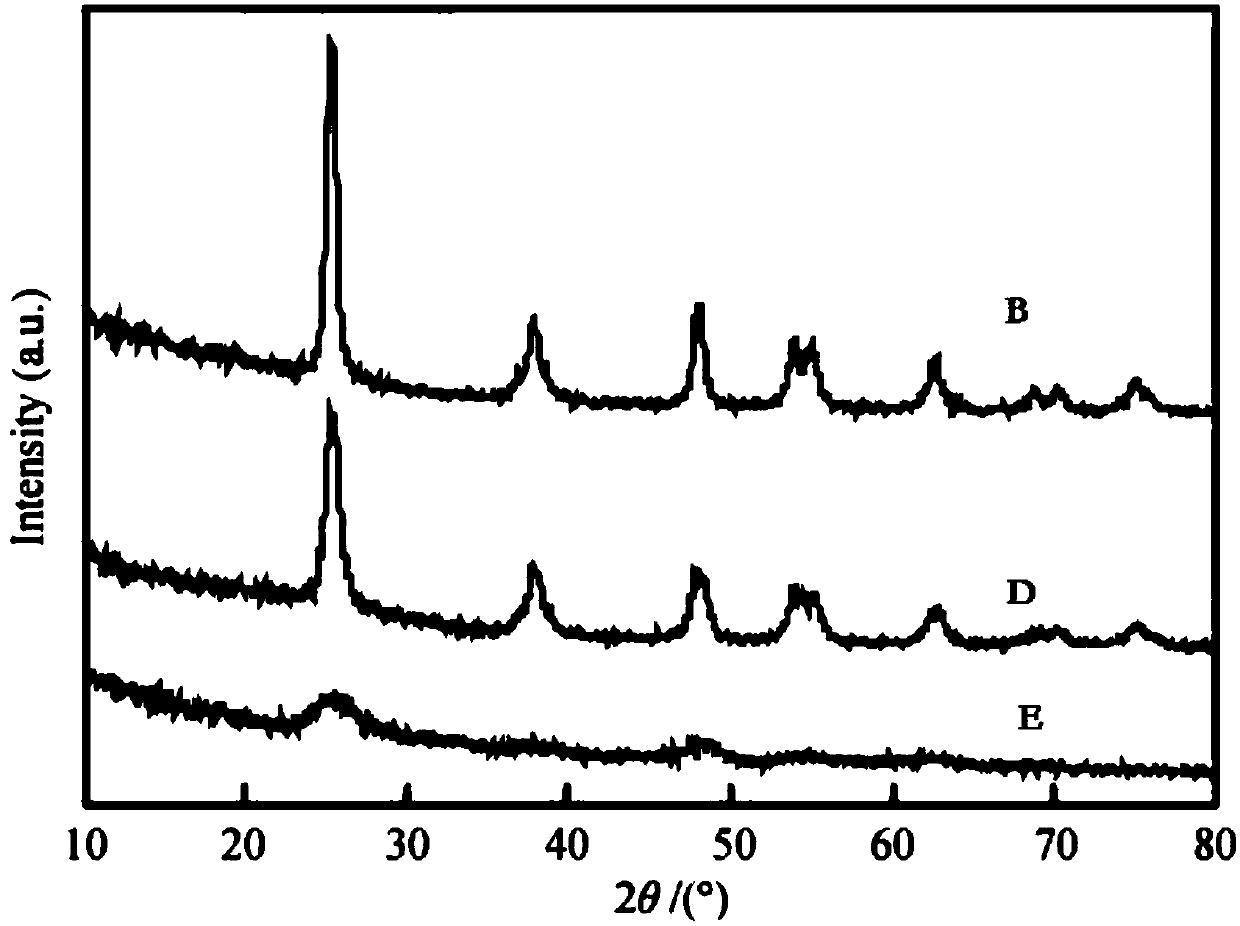Method for regulating river branch black and odorous water bodies by using graphene modified nano titanium dioxide photocatalyst fiber net
A nano-titanium dioxide and graphene modification technology, applied in chemical instruments and methods, oxidized water/sewage treatment, special compound water treatment, etc. The effect of mass production, simple production process and low production cost
- Summary
- Abstract
- Description
- Claims
- Application Information
AI Technical Summary
Problems solved by technology
Method used
Image
Examples
Embodiment 1
[0068] The method for using graphene-modified nano-titanium dioxide photocatalyst fiber net to remediate black and odorous water in rivers comprises the following steps:
[0069] (1) With flake graphite as raw material, concentrated H 2 SO 4 and KMnO 4 As an oxidizing agent, through a two-step method, graphite oxide was first prepared, and then graphene oxide was obtained by ultrasonic dispersion; at 180 ° C, by solvothermal method, 30 mg graphene oxide and 3 mL Ti(OBu) 4 As the initial reactant, react in ethanol solvent for 6 hours to synthesize the reduced graphene oxide modified nano-titanium dioxide heterostructure composite photocatalyst, the reaction principle is as follows figure 1 As shown, the reduced graphene oxide modified nano-titanium dioxide heterostructure composite photocatalyst was constructed by hydrothermal-heat treatment-hydrothermal method, and amorphous carbon was used as the heterogeneous structure between TiO2 nanocrystals and graphene two-dimensional...
Embodiment 2
[0076] The method for using graphene-modified nano-titanium dioxide photocatalyst fiber net to remediate black and odorous water in rivers comprises the following steps:
[0077] (1) With flake graphite as raw material, concentrated H 2 SO 4 and KMnO 4 As an oxidizing agent, through a two-step method, graphite oxide was first prepared, and then graphene oxide was obtained by ultrasonic dispersion; at 180 ° C, by solvothermal method, 30 mg graphene oxide and 3 mL Ti(OBu) 4As the initial reactant, react in ethanol solvent for 6 hours to synthesize the reduced graphene oxide modified nano-titanium dioxide heterostructure composite photocatalyst, thereby constructing the reduced graphene oxide modified nano Titanium dioxide heterostructure composite photocatalyst, using amorphous carbon as the heterostructure interface between TiO2 nanocrystals and graphene two-dimensional planes, improves the composite effect of TiO2 and graphene, and improves its visible light catalytic activi...
Embodiment 3
[0085] The method for using graphene-modified nano-titanium dioxide photocatalyst fiber net to remediate black and odorous water in rivers comprises the following steps:
[0086] (1) With flake graphite as raw material, concentrated H 2 SO 4 and KMnO 4 As an oxidizing agent, through a two-step method, graphite oxide was first prepared, and then graphene oxide was obtained by ultrasonic dispersion; at 180 ° C, by solvothermal method, 30 mg graphene oxide and 3 mL Ti(OBu) 4 As the initial reactant, react in ethanol solvent for 6 hours to synthesize the reduced graphene oxide modified nano-titanium dioxide heterostructure composite photocatalyst, thereby constructing the reduced graphene oxide modified nano Titanium dioxide heterostructure composite photocatalyst, using amorphous carbon as the heterostructure interface between TiO2 nanocrystals and graphene two-dimensional planes, improves the composite effect of TiO2 and graphene, and improves its visible light catalytic activ...
PUM
| Property | Measurement | Unit |
|---|---|---|
| Specific surface area | aaaaa | aaaaa |
| Thickness | aaaaa | aaaaa |
| Thickness | aaaaa | aaaaa |
Abstract
Description
Claims
Application Information
 Login to View More
Login to View More - R&D
- Intellectual Property
- Life Sciences
- Materials
- Tech Scout
- Unparalleled Data Quality
- Higher Quality Content
- 60% Fewer Hallucinations
Browse by: Latest US Patents, China's latest patents, Technical Efficacy Thesaurus, Application Domain, Technology Topic, Popular Technical Reports.
© 2025 PatSnap. All rights reserved.Legal|Privacy policy|Modern Slavery Act Transparency Statement|Sitemap|About US| Contact US: help@patsnap.com



